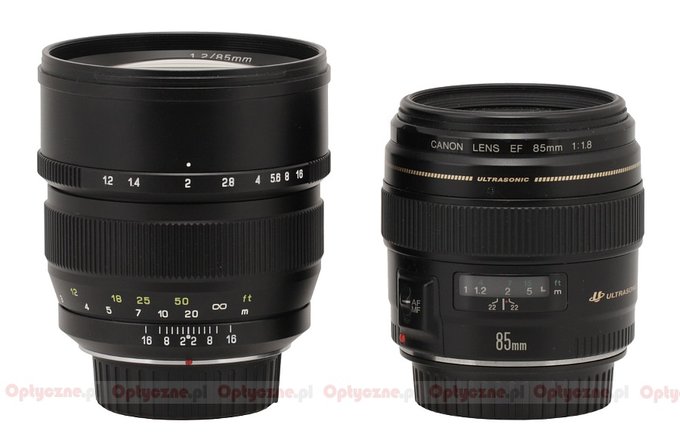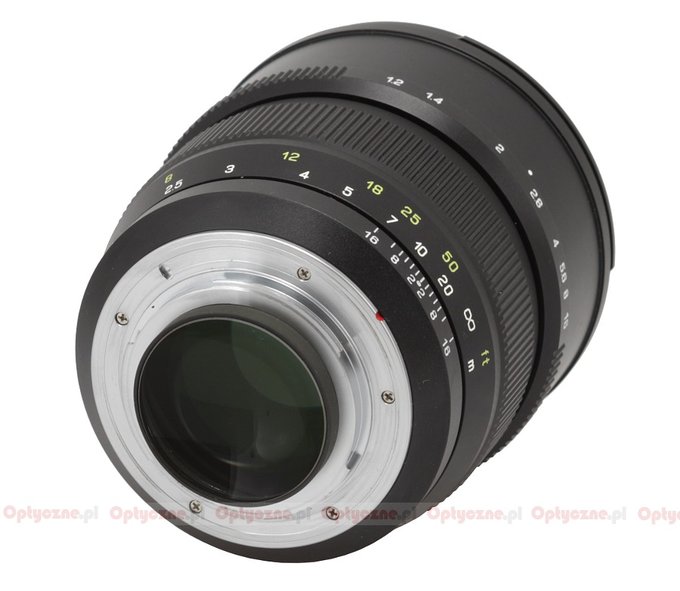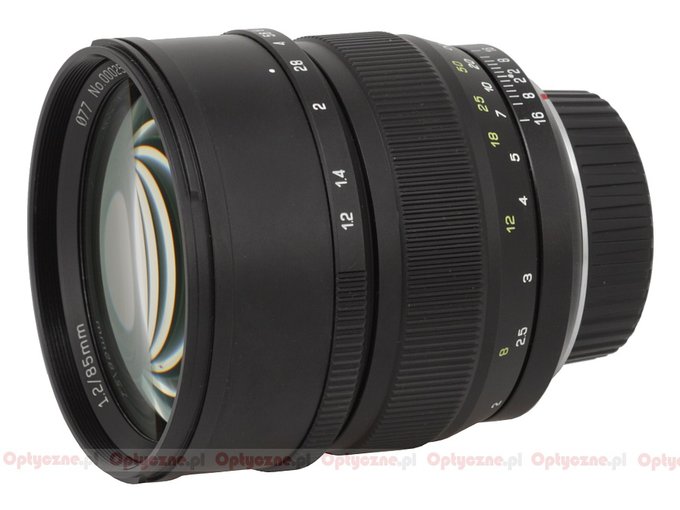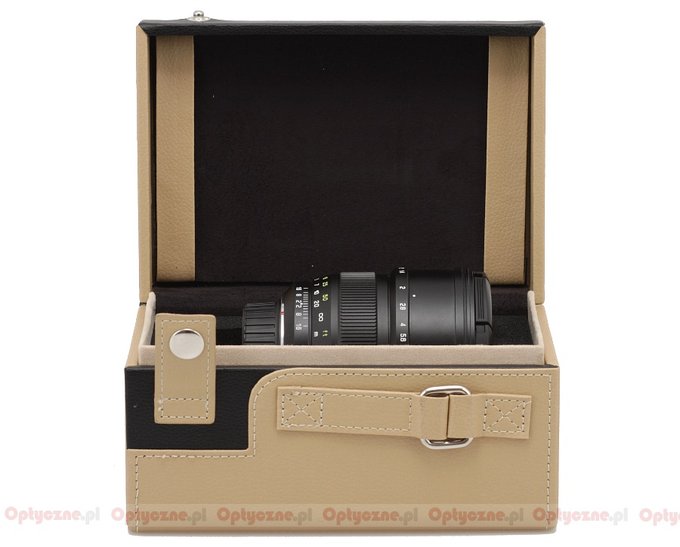Mitakon Speedmaster 85 mm f/1.2
3. Build quality
The following chart presents a comparison between most of lenses, mentioned above. It is clear the Mitakon is more optically complex than other 1.2/85 lenses although it consists of the same number of elements as the slower Samyang. The Mitakon is also physically the biggest in this group but it is the Canon which is the heaviest. Also 11 aperture blades of the Mitakon stick out in this group.
In the photo below the Speedmaster 1.2/85 is positioned next to the Canon EF 85 mm f/1.8 USM.
Please Support UsIf you enjoy our reviews and articles, and you want us to continue our work please, support our website by donating through PayPal. The funds are going to be used for paying our editorial team, renting servers, and equipping our testing studio; only that way we will be able to continue providing you interesting content for free. |
- - - - - - - - - - - - - - - - - - - - - - - - - - - - - - - - - - - - - - - - - - - - - - - -
 |
The tested lens begins with a rear element which doesn’t move and is 36 mm in diameter; it sticks out of the mount and is not covered by anything. It reminds me a bit of the Canon 1.2/85 which rear element had additionally the contacts glued on its surface. The Mitakon doesn’t have any contact plate so its rear element is free of that addition. Still the result is such that the body of a camera doesn’t get any info concerning the settings like the aperture and focal lengths; the aperture itself is controlled only by turning a stepless ring positioned on the lens.
 |
The metal body of the lens starts with an immobile ring on which there is a depth of field scale with markings for every aperture value ranging from f/2 to f/16 (but only those by f/16. f/8 and f/2 are actually undersigned). The next part is a manual focus ring, 33 mm wide. Most of it is covered by metal ribbing but below you see a distance scale expressed in meters and feet. The ring itself moves smoothly and is well-damped; running though the whole distance scale needs a turn through an angle of 270 degrees. It is a good value, allowing you comfortable work – the expensive and also manual Zeiss Otus 1.4/85 offers exactly the same value.
 |
The next part is an aperture ring. It is 9 mm wide, moves smoothly and is stepless which will please the fans of video recording for sure. The marks are set by all aperture values ranging from f/1.2 to f/16 apart from f/11.
Then you see an immobile ring which turns smoothly into a hood mount. The front element is 67 mm in diameter and surrounded by a part of the casing with inscriptions concerning the name and parameters of the lens along with a non-rotating filter thread, 77 mm in diameter.
The optical construction of the Mitakon 1.2/85 consists of 9 elements positioned in 6 groups. The number of special elements inside is truly impressive: there are overall two made of Extra-Low Dispersion glass and four made of High Refractive Index glass. Inside you can also find an aperture with as many as 11 blades which can be closed down to f/16.
The product bundle includes both caps and a stylish, padded box for storing the lens. It’s a pity, though, that there is no hood added.
 |






